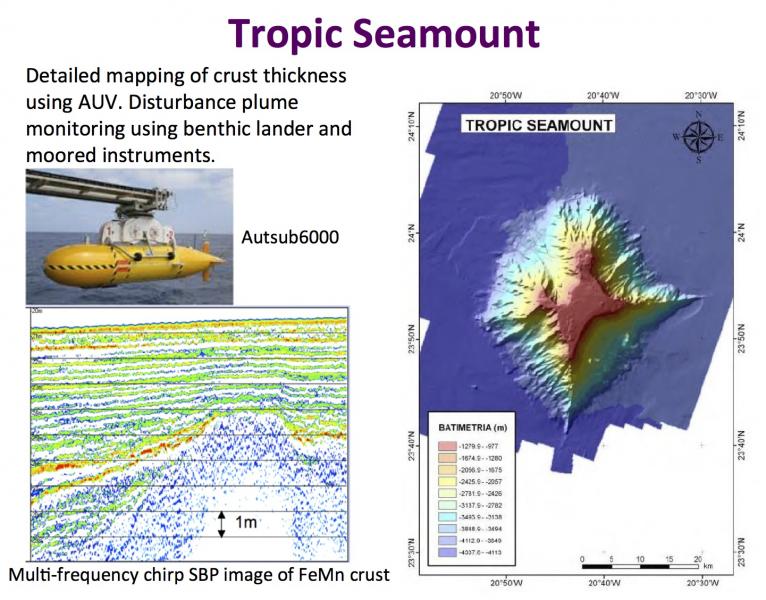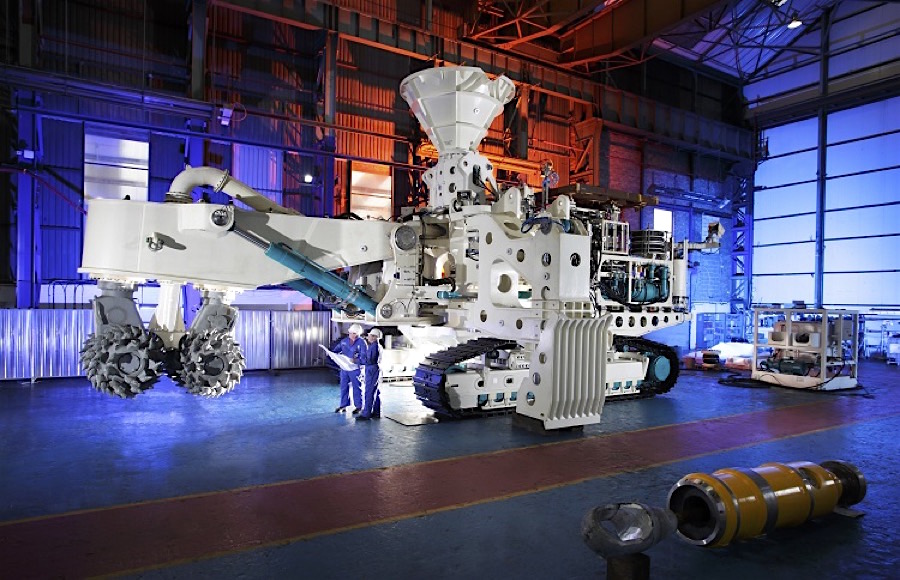British scientists find sub-sea minerals treasure trove
A British team of scientists has discovered an underwater deposit of diverse minerals in the Atlantic, about 500km off the Canary Islands, which contains vast amounts of tellurium, used in the making of solar panels, wind turbines and electronics.
The deposit, located 1,000 metres below the ocean surface, in a 3,000 metres-tall mountain known as "Tropic Seamount," contains tellurium in concentrations 50,000 times higher than in deposits on land, BBC reported.
The finding, part of a broader research project called MarineE-tech, is significant as the deposit is estimated to hold 2,670 tonnes of tellurium or 5% of the global reserves.
Scientists are also studying the potential of another deposit, the Rio Grande Rise, which is located 1,500 km off Brazil's southern coast, in international waters.


The team of British scientists found valuable minerals atop an underwater mountain called Tropic Seamount (pictured), which is basically a huge flat-topped mound of some of the scarcest materials on Earth. (Image courtesy of UK's National Oceanography Centre.)
They are also weighing up the relative risks and merits of mining the valuable resource on land as opposed to on the seabed.
They are not alone in this quest. For years, marine biologists and other experts have been trying to determine the impacts that seabed mining would have on aquatic ecosystem without reaching consensus yet.
Researchers, industry actors, NGOs and legal experts from 32 organizations across Europe, are currently gathering data to determine what damage, if any, might be done by mining the seabed.Through the MIDAS project, a group made up of researchers, industry actors, NGOs and legal experts from 32 organizations across Europe, is currently gathering data to determine what damage, if any, might be done by mining and so inform regulators of what needs to be put in place to protect the deep sea environment.
That hasn't stopped companies such as Debmarine Namibia, a 50/50 joint venture between the Government Namibia and De Beers. For more than 10 years, the company has been extracting diamonds from the seabed at depths of 90 to 140 metres in the Atlantic Ocean off the coast of the southwest African country.
Debmarine has an exclusive mining license for a nearly 6,000 square kilometre offshore area and has mined less than 4% of that area to date.
Meanwhile, the United Nations' International Seabed Authority (ISA) continues supporting the activity. It has so far issued 26 exploration licences to governments and companies, authorizing them to operate in international waters.
Countries including New Zealand, Namibia and Papua New Guinea have also granted licences for seabed mining exploration.
But it is Canada's Nautilus Minerals (TSX:NUS), which is close to open the first polymetallic seabed mine, the one that has attracted most eyeballs and critics to its project. In a deal arranged outside the ISA system, the company overcame several difficulties until it reached an agreement with the Papua New Guinea government in 2014 to move forward with its Solwara 1 gold, copper and silver underwater project, located in the Bismarck Sea. Since then, progress on the project has moved quickly, with mining operations set to begin in 2019.


Nautilus seafloor production machines, each the size of a small house, are equipped with massive rock-crushing teeth. (Courtesy of Nautilus Minerals)